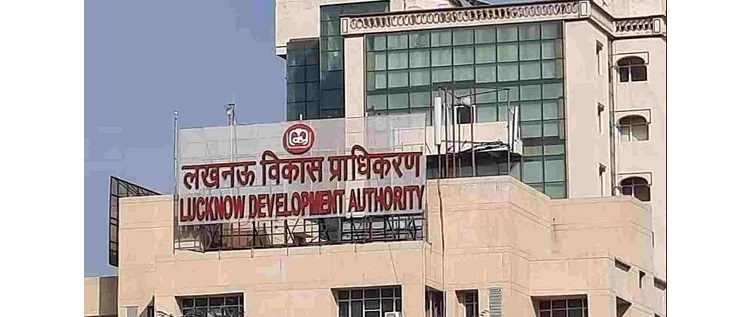E - PAPER
Real estate players welcome Mumbai Development Plan 2034
Maharashtra Chief Minister Devendra Fadnavis approved the Scrutiny Committee Report on Mumbai Development Plan 2034. This will pave way for implementing the new DP for accelerated growth of Mumbai city. The DP 2034 proposes to unlock about 3,355 hectares of public and privately owned lands, curre
 BY
admin
BY
admin
Published - Thursday, 26 Apr, 2018

Maharashtra Chief Minister Devendra Fadnavis approved the Scrutiny Committee Report on Mumbai Development Plan 2034. This will pave way for implementing the new DP for accelerated growth of Mumbai city.
The DP 2034 proposes to unlock about 3,355 hectares of public and privately owned lands, currently tagged as no development zones (NDZ), to push low-cost housing and augment social amenities. About 2,100 hectares of it will go for affordable housing under the Development Plan 2034. An additional 300 hectares of salt pan land will also go for affordable homes. FSI levels in the Island City are raised up to 3, in the suburbs FSI is retained at 2.5 for residential projects. For commercial projects, the FSI has been raised up to 5.
Real estate players welcomed the development plan 2034.
Anuj Puri, Chairman, ANAROCK Property Consultants commented, “The Government’s approval on the long-pending Mumbai DP 2034 is a welcome move. The DP is likely to spur real estate activity in the city and also pave the way for the development of much-needed affordable houses in Maximum City.”
“For years, Mumbai’s Development Plans focused on residential real estate development. This time around, the focus has been equally placed on commercial real estate, with twin focus – first, on decongesting existing CBD areas as also extending the ‘walk to work’ aspect to newer locations. The Mumbai Development Plan 2034 brings in a serious effort as ensuring the target of affordable homes get constructed within a reasonably short time, given the opening up of various categories of land on which such construction was earlier not allowed. Similarly, there is an acceptance of the fact that GDP growth will not happen only because of industrial production, but commercial activities will play a major role in enhancing GDP growth – the DP shows significant hikes in FSI for commercial, retail and hospitality. Similarly, for financial technology and bio-tech parks, medical and educational hubs. The FSI hike for commercial real estate is expected to not just enhance GDP growth, but also encourage employment and economic development,” said Mr. Niranjan Hiranandani, President NAREDCO.
Ramesh Nair, CEO & Country Head, JLL India said, “We see a massive opportunity for affordable housing and the plan has managed to maintain a balance between environment and development. There is great promise in this DP and it is supported by a robust financial outlay for onground implementation.”
Ravi Ahuja, Senior Executive Director, Mumbai & Developer Services at Colliers International India explained, “I expect higher Commercial FSI to encourage existing premium and luxury residential plans to convert to commercial, particularly given the stagnancy in residential sales for premium and luxury segment developments & its ongoing correction, and compliance complications being faced under RERA by residential projects. I expect Developers to initiate conversion from residential to Commercial in identified locations. Office leasing demand continues to be steady at approx. 5 to 6 million sf p.a. in Mumbai”
Shishir Baijal, Chairman & Managing Director, Knight Frank India hoped that the move would bring the much needed stability in the real estate market. He said, “Key measures such as significant increase in the FSI for residential development particularly in South Mumbai and the thrust on affordable housing through the opening up no development zones and salt pan land would boost the national vision of ‘Housing for All’. Another unprecedented move is the fillip towards commercial space development. The burning demand for commercial real estate in the space-constraint city has received the government’s attention through increased FSI for building office spaces. While these are our initial reactions, the DP 2034 would have far-reaching implications on Mumbai’s growth over the next two decades, which would need closer introspection in the days to come.”
Ms. Shubika Bilkha, Director, The Real Estate Management Institute (REMI) said, “The DP has assumed a per capita housing requirement increase from 9 sq.mt to 18-20sq mts and a more modest residential population growth. The DP is anticipated to facilitate the creation of 8 million jobs and 1 million affordable homes. While the details of the DP need to be further analysed, it will be interesting to understand how we manage green spaces and effectively accommodate additional development zones in an already extremely densely populated City. I am sure there is some cheer among the real estate sector, but as a citizen, I would be keen to understand the infrastructure support available to propel this development activity.”
Mr. Amit Wadhwani, Director, Sai Estate Consultants said, “The development plan also emphasizes on the non-construction area, the theme gardens, pay and park concept, old-age homes, farmers market earmarked etc, leading to maintain the cities greenery in place. Adding to the Development Plan 2034, the Maharashtra government have looked into increasing the floor space and the extension of development of land, across the residential buildings and commercial as well. The implementation of Development Plan 2034 will bring in the easy way of communication not only for real estate but all the segment hereafter.”
RELATED STORY VIEW MORE
TOP STORY VIEW MORE

Mixed Outlook for Australia's Housing Sector In 2024
Mixed Outlook for Australia's Housing Sector In 2024
05 December, 2024NEWS LETTER
Subscribe for our news letter
E - PAPER
-

CURRENT MONTH 
LAST MONTH














